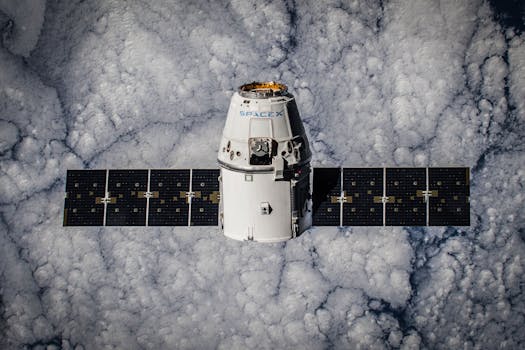The Future of Satellites: Advancements and Innovations in Space Technology

The Future of Satellites: Advancements and Innovations in Space Technology
The future of satellites holds much promise, with advancements in technology and innovations in space exploration. From improved communications to enhanced imaging capabilities, the potential applications of satellites are vast and varied. As we look to the future, it is clear that satellites will play an increasingly important role in our daily lives, from providing critical infrastructure for global communications to enabling cutting-edge scientific research.
Advancements in Satellite Technology
One of the most significant advancements in satellite technology is the development of smaller, more efficient satellites. These satellites, known as smallsats or cubesats, are designed to be smaller and lighter than traditional satellites, making them less expensive to launch and operate. Despite their smaller size, smallsats are capable of performing a wide range of tasks, from providing high-speed internet access to monitoring environmental changes.
Another area of advancement in satellite technology is the development of more powerful and efficient propulsion systems. Traditional satellites rely on chemical propulsion systems, which are heavy and inefficient. New propulsion systems, such as electric propulsion and advanced ion engines, offer significant improvements in efficiency and maneuverability, allowing satellites to operate for longer periods of time and to change their orbits more easily.
Innovations in Satellite Communications
Satellite communications are a critical component of modern telecommunications, providing connectivity to remote and underserved areas around the world. The future of satellite communications holds much promise, with the development of new technologies and innovations in areas such as satellite constellations and 5G networks. Satellite constellations, such as those being developed by companies like SpaceX and OneWeb, consist of thousands of small satellites working together to provide global coverage and high-speed internet access.
The integration of satellite communications with 5G networks is another area of innovation, with the potential to provide seamless and ubiquitous connectivity to users around the world. This integration will enable a wide range of new applications and services, from enhanced mobile broadband to mission-critical communications for emergency responders and other public safety officials.
Enhanced Imaging Capabilities
Satellite imaging is another area where significant advancements are being made. New satellite imaging technologies, such as synthetic aperture radar (SAR) and hyperspectral imaging, offer enhanced resolution and accuracy, allowing for a wide range of applications, from environmental monitoring to crop management. SAR technology, for example, uses radar pulses to create high-resolution images of the Earth’s surface, even in cloudy or dark conditions.
Hyperspectral imaging, on the other hand, involves the collection of data across a wide range of electromagnetic spectrum, allowing for the identification of specific materials and objects. This technology has a wide range of applications, from mineral exploration to agricultural management, and is being used by companies and governments around the world to gather critical information about our planet.
Conclusion
In conclusion, the future of satellites holds much promise, with advancements in technology and innovations in space exploration. From improved communications to enhanced imaging capabilities, the potential applications of satellites are vast and varied. As we look to the future, it is clear that satellites will play an increasingly important role in our daily lives, from providing critical infrastructure for global communications to enabling cutting-edge scientific research.




